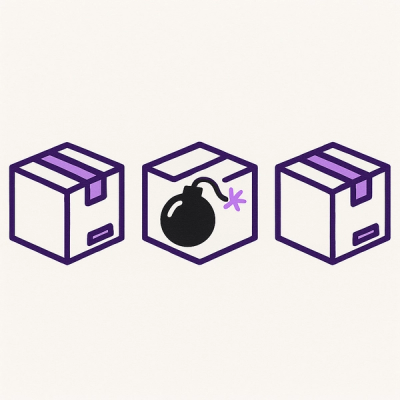Plivo Node.js library



The Node.js SDK simplifies the integration of communications into your Node.js applications through the Plivo REST API. You will be able to use the SDK to make voice calls, send SMS, and generate Plivo XML to manage your call flows.
Installation
Install the SDK using npm
$ npm install plivo
If you have the 0.4.1 version (a.k.a legacy) already installed, you may have to first uninstall it before installing the new version.
For features in beta, use the beta branch:
$ npm install plivo@beta
Getting started
Authentication
To make the API requests, you need to create a Client and provide it with authentication credentials (which can be found at https://console.plivo.com/dashboard/).
We recommend that you store your credentials in the PLIVO_AUTH_ID and the PLIVO_AUTH_TOKEN environment variables, so as to avoid the possibility of accidentally committing them to source control. If you do this, you can initialise the client with no arguments and it will automatically fetch them from the environment variables:
let plivo = require('plivo');
let client = new plivo.Client();
Alternatively, you can specifiy the authentication credentials while initializing the Client.
let plivo = require('plivo');
let client = new plivo.Client('<auth_id>', '<auth_token>');
The basics
The SDK uses consistent interfaces to create, retrieve, update, delete and list resources. The pattern followed is as follows:
client.resources.create(name,params);
client.resources.get(id);
client.resources.update(params);
client.resources.delete(id);
client.resources.list({limit:5,offset:0});
Also, using client.resources.list() would list the first 20 resources by default (which is the first page, with limit as 20, and offset as 0). To get more, you will have to use limit and offset to get the second page of resources.
Examples
Send a message
let plivo = require('plivo');
let client = new plivo.Client();
client.messages.create({
src: '+14156667778',
dst: '14156667777',
text: 'Hello, this is a sample text from Plivo',
}).then(function(response) {
console.log(response)
});
Make a call
let plivo = require('plivo');
let client = new plivo.Client();
client.calls.create(
'+14156667778',
'+14156667777',
'http://answer.url'
).then(function(response) {
console.log(response)
});
Lookup a number
let plivo = require('plivo');
let client = new plivo.Client('<auth_id>', '<auth_token>');
client.lookup.get('<number-goes-here>')
.then(function(response) {
console.log(response);
});
Generate Plivo XML
let plivo = require('plivo');
let response = new plivo.Response();
let speak_body = "Hello, world!";
response.addSpeak(speak_body);
console.log(response.toXML());
This generates the following XML:
<Response>
<Speak>Hello, world!</Speak>
</Response>
Run a PHLO
let plivo = require('plivo');
var PhloClient = plivo.PhloClient;
var phloClient = phlo = null;
phloClient = new PhloClient('<auth-id>', '<auth-token>');
phloClient.phlo('<phlo_id>').run().then(function (result) {
console.log('Phlo run result', result);
});
WhatsApp Messaging
Plivo's WhatsApp API allows you to send different types of messages over WhatsApp, including templated messages, free form messages and interactive messages. Below are some examples on how to use the Plivo Go SDK to send these types of messages.
Templated Messages
Templated messages are a crucial to your WhatsApp messaging experience, as businesses can only initiate WhatsApp conversation with their customers using templated messages.
WhatsApp templates support 4 components: header , body, footer and button. At the point of sending messages, the template object you see in the code acts as a way to pass the dynamic values within these components. header can accomodate text or media (images, video, documents) content. body can accomodate text content. button can support dynamic values in a url button or to specify a developer-defined payload which will be returned when the WhatsApp user clicks on the quick_reply button. footer cannot have any dynamic variables.
Example:
var plivo = require('plivo');
var client = new plivo.Client("<auth_id>", "<auth_token>");
const template = {
"name": "template_name",
"language": "en_US",
"components": [
{
"type": "header",
"parameters": [
{
"type": "media",
"media": "https://xyz.com/s3/img.jpg"
}
]
},
{
"type": "body",
"parameters": [
{
"type": "text",
"text": "WA-Text"
}
]
}
]
}
client.messages.create({
src:"+14156667778",
dst:"+14156667777",
type:"whatsapp",
template:template,
url: "https://foo.com/wa_status/"
}).then(function (response) {
console.log(response);
});
Templated WhatsApp Messages With Named Parameter
This guide shows how to send templated WhatsApp messages with named parameters.
Example:
var plivo = require('plivo');
var client = new plivo.Client("<auth_id>", "<auth_token>");
const template = {
"name": "template_name",
"language": "en_US",
"components": [
{
"type": "header",
"parameters": [
{
"type": "text",
"parameter_name": "header_title",
"text": "WA-header"
}
]
},
{
"type": "body",
"parameters": [
{
"type": "text",
"parameter_name": "user_name",
"text": "Saurabh"
}
]
}
]
}
client.messages.create({
src:"+14156667778",
dst:"+14156667777",
type:"whatsapp",
template:template,
url: "https://foo.com/wa_status/"
}).then(function (response) {
console.log(response);
});
Free Form Messages
Non-templated or Free Form WhatsApp messages can be sent as a reply to a user-initiated conversation (Service conversation) or if there is an existing ongoing conversation created previously by sending a templated WhatsApp message.
Free Form Text Message
Example:
var plivo = require('plivo');
var client = new plivo.Client("<auth_id>", "<auth_token>");
client.messages.create({
src:"+14156667778",
dst:"+14156667777",
type:"whatsapp",
text: "Hello, this is sample text",
url: "https://foo.com/wa_status/"
}).then(function (response) {
console.log(response);
});
Free Form Media Message
Example:
var plivo = require('plivo');
var client = new plivo.Client("<auth_id>", "<auth_token>");
client.messages.create({
src:"+14156667778",
dst:"+14156667777",
type:"whatsapp",
text: "Hello, this is sample text",
media_urls:["https://sample-videos.com/img/Sample-png-image-1mb.png"],
url: "https://foo.com/wa_status/"
}).then(function (response) {
console.log(response);
});
Interactive Messages
This guide shows how to send non-templated interactive messages to recipients using Plivo’s APIs.
Quick Reply Buttons
Quick reply buttons allow customers to quickly respond to your message with predefined options.
Example:
let plivo = require('plivo');
var client = new plivo.Client("<auth_id>","<auth_token>");
const interactive = {
"type": "button",
"header": {
"type": "media",
"media": "https://xyz.com/s3/img.jpg"
},
"body": {
"text": "Make your selection"
},
"action": {
"buttons": [
{
"title": "Click here",
"id": "bt1"
},
{
"title": "Know More",
"id": "bt2"
},
{
"title": "Request Callback",
"id": "bt3"
}
]
}
}
client.messages.create({
src:"+14156667778",
dst:"+14156667777",
type:"whatsapp",
interactive:interactive
}).then(function (response) {
console.log(response);
});
Interactive Lists
Interactive lists allow you to present customers with a list of options.
Example:
let plivo = require('plivo');
var client = new plivo.Client("<auth_id>","<auth_token>");
const interactive = {
"type": "list",
"header": {
"type": "text",
"text": "Welcome to Plivo"
},
"body": {
"text": "You can review the list of rewards we offer"
},
"footer": {
"text": "Yours Truly"
},
"action": {
"buttons": [{
"title": "Click here"
}],
"sections": [
{
"title": "SECTION_1_TITLE",
"rows": [
{
"id": "SECTION_1_ROW_1_ID",
"title": "SECTION_1_ROW_1_TITLE",
"description": "SECTION_1_ROW_1_DESCRIPTION"
},
{
"id": "SECTION_1_ROW_2_ID",
"title": "SECTION_1_ROW_2_TITLE",
"description": "SECTION_1_ROW_2_DESCRIPTION"
}
]
},
{
"title": "SECTION_2_TITLE",
"rows": [
{
"id": "SECTION_2_ROW_1_ID",
"title": "SECTION_2_ROW_1_TITLE",
"description": "SECTION_2_ROW_1_DESCRIPTION"
},
{
"id": "SECTION_2_ROW_2_ID",
"title": "SECTION_2_ROW_2_TITLE",
"description": "SECTION_2_ROW_2_DESCRIPTION"
}
]
}
]
}
}
client.messages.create({
src:"+14156667778",
dst:"+14156667777",
type:"whatsapp",
interactive:interactive
}).then(function (response) {
console.log(response);
});
Interactive CTA URLs
CTA URL messages allow you to send links and call-to-action buttons.
Example:
let plivo = require('plivo');
var client = new plivo.Client("<auth_id>","<auth_token>");
const interactive = {
"type": "cta_url",
"header": {
"type": "media",
"media": "https://xyz.com/s3/img.jpg"
},
"body": {
"text": "Know More"
},
"footer": {
"text": "Plivo"
},
"action": {
"buttons": [
{
"title": "Click here",
"cta_url": "https:plivo.com"
}
]
}
}
client.messages.create({
src:"+14156667778",
dst:"+14156667777",
type:"whatsapp",
interactive:interactive
}).then(function (response) {
console.log(response);
});
Location Messages
This guide shows how to send templated and non-templated location messages to recipients using Plivo’s APIs.
Templated Location Messages
Example:
let plivo = require('plivo');
var client = new plivo.Client("<auth_id>","<auth_token>");
const template = {
"name": "plivo_order_pickup",
"language": "en_US",
"components": [
{
"type": "header",
"parameters": [
{
"type": "location",
"location": {
"longitude": "122.148981",
"latitude": "37.483307",
"name": "Pablo Morales",
"address": "1 Hacker Way, Menlo Park, CA 94025"
}
}
]
}
]
}
client.messages.create({
src:"+14156667778",
dst:"+14156667777",
type:"whatsapp",
template:template
}).then(function (response) {
console.log(response);
});
Non-Templated Location Messages
Example:
let plivo = require('plivo');
var client = new plivo.Client("<auth_id>","<auth_token>");
const location = {
"longitude": "122.148981",
"latitude": "37.483307",
"name": "Pablo Morales",
"address": "1 Hacker Way, Menlo Park, CA 94025"
}
client.messages.create({
src:"+14156667778",
dst:"+14156667777",
type:"whatsapp",
location:location
}).then(function (response) {
console.log(response);
});
More examples
More examples are available here. Also refer to the guides for configuring the Express server to run various scenarios & use it to test out your integration in under 5 minutes.
Reporting issues
Report any feedback or problems with this version by opening an issue on Github.
Local Development
Note: Requires latest versions of Docker & Docker-Compose. If you're on MacOS, ensure Docker Desktop is running.
- Export the following environment variables in your host machine:
export PLIVO_AUTH_ID=<your_auth_id>
export PLIVO_AUTH_TOKEN=<your_auth_token>
export PLIVO_API_DEV_HOST=<plivoapi_dev_endpoint>
export PLIVO_API_PROD_HOST=<plivoapi_public_endpoint>
- Run
make build. This will create a docker container in which the sdk will be setup and dependencies will be installed.
The entrypoint of the docker container will be the setup_sdk.sh script. The script will handle all the necessary changes required for local development. It will also package the sdk and reinstall it as a dependecy for the test program.
- The above command will print the docker container id (and instructions to connect to it) to stdout.
- The testing code can be added to
<sdk_dir_path>/node-sdk-test/test.js in host
(or /usr/src/app/node-sdk-test/test.js in container)
- The sdk directory will be mounted as a volume in the container. So any changes in the sdk code will also be reflected inside the container. However, when any change is made, the dependencies for the test program need to be re-installed. To do that:
- Either restart the docker container
- Or Run the
setup_sdk.sh script
- To run test code, run
make run CONTAINER=<cont_id> in host.
- To run unit tests, run
make test CONTAINER=<cont_id> in host.
<cont_id> is the docker container id created in 2.
(The docker container should be running)
Test code and unit tests can also be run within the container using
make run and make test respectively. (CONTAINER argument should be omitted when running from the container)




